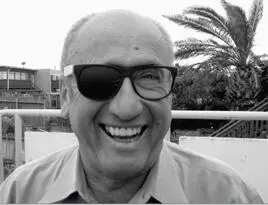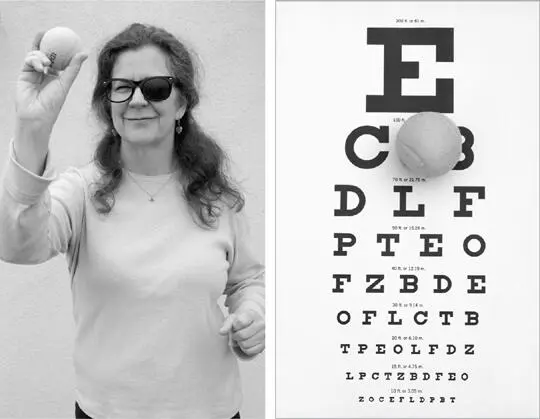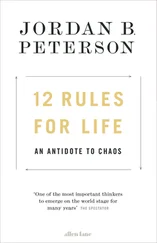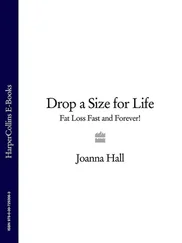You can also examine how well you see from mid-distance. Mid-distance is somewhere between four feet and fifteen feet. You can use the same “fist telescope” technique that was mentioned earlier to tell if one eye is stronger at mid-distance.
Comprehension Problems with the Weaker Eye
A third of those who have disparity between their eyes have comprehension problems with their weaker eye’s reading, meaning that they don’t necessarily retain what they read with the weaker eye. This exercise works to correct the disparity.
I recommend blocking your strong eye with a small piece of paper taped to the bridge of your nose. Now wave your hand to the side of the strong eye. Read three sentences with your weaker eye; then take the page away and use a tape recorder or MP3 player to record yourself as you repeat, from memory, what you read. Now play the tape back while reading along with the weaker eye; 80 percent of everyone who does this will realize that their retention of information is bad with the weaker eye.
If you have a partner to work with, keep reading the sentences to your partner as you recollect them until you get the sentences right. This will help to build retention with your weaker eye. Before doing this exercise, be sure to palm for six minutes, in addition to sunning and working with both eyes; only then should you isolate the weaker eye.
Step 8: Blocking the Strong Eye
This next exercise, as physical as it is, can also give you a whole new mental outlook of the world. Sunlight is the best lighting in which to do this exercise. Otherwise, very strong interior light will work if it makes it easy for you to see the letters.
Look at the page in front of you from a distance that is comfortable and easy to read. Wave your hand to the side of your head, from all the way above your forehead to the side of your eyes and beneath them. You could also wave around a colored piece of paper, a toy with different colors, a stick with a ribbon, or anything else that draws your attention. Look centrally at the letters on the page while peripherally sensing the object that you wave. As a result you will be working both your periphery and center together. That will release your eye from strain. Your eyes, as I mentioned before, cannot strain if both eyes are being used together.
Whenever there is strain, it is because one eye is being used more than the other. This exercise can make a huge difference by helping you to integrate the center and the periphery. Anytime you are looking at something that you can’t easily see, like a menu or a newspaper, wave your hands to the side, and slowly but surely the letters will become clearer to you.
Now take a small piece of paper, approximately one inch by two inches, and tape it to the bridge of your nose so it covers your stronger eye. To make sure you have done this correctly, close your weaker eye and make sure you cannot see the page with the stronger eye that is covered. Then wave to the side of your covered eye and read the page with your weaker eye.
Make no effort when you read with your weaker eye. Any effort that you make will slow down your progress in several ways. It will stop you from adopting the habit of looking with your weaker eye at small areas. If it is strenuous for you to look with your weaker eye, your instincts are going to try to prevent your progress. You only need to make one big effort: the effort to make no effort! This will become easier through relaxation.
You are now waving your hand to the side of your strong eye. Wave quickly. The wrist flips toward your ear, and you make sure that your hand does not move farther than your periphery can see. Your strong eye is truly looking straight at the paper, but the central vision of your strong eye is being put on hold for the moment. The periphery of the stronger eye is being fully used and, in fact, may expand. You will be paying attention to a peripheral view that many people inhibit when they look centrally.
Be sure to relax your face. Your face relaxes when your jaw drops and you have a sense that the cheek is a bit longer. Relax your neck and create a sense that the neck is lengthening a bit. In fact, you can even imagine from time to time that a string lifts your head up and that your neck is lengthening.
Keep waving your hand while reading with your weaker eye. Put the page at a distance where the print can be read with slight effort. Your job is to minimize the effort. The way to do this is to follow each letter as if you are spilling dark ink on it or painting it with a marker, as if you were writing it line by line, point by point. Observe the white of the letter and the black of the letter. When you remove the piece of paper, your two maculae will be working together without one suppressing the other.
Most farsightedness could be reduced and perhaps eliminated with this kind of exercise.
Cheap Sunglasses
Buy yourself some cheap sunglasses and remove the lens from the side of your weak eye. Then cover the other lens with an opaque tape such as dark duct tape. Put the glasses on and look into the distance with your weaker eye.
After you have looked into the distance for a while, take a rubber ball or a tennis ball and play with that ball at a distance. (Have three balls available when you do any exercises requiring a ball so that you will have another on hand when one gets away from you.) For example, you can look at a wall twenty feet away; then take the ball and throw it at the wall ten times and catch it. The ball may not return straight to your hands, but don’t lose your patience; just keep playing with it. This exercise helps to develop the lens and also helps with central vision.

Figure 2.18. The glasses block the central vision of your strong eye while encouraging the peripheral vision to expand.

Figure 2.19. (a) Take a ball and throw it so it hits the large letters. (b) Tennis ball hits eye chart.
After doing this for a while, attach an eye chart to a wall. It is best to have two eye charts available: a ten-foot chart and a twenty-foot chart. The twenty-foot chart is especially good for those people whose vision is poor. The ten-foot chart is for those whose eyes are stronger.
Stand five to ten feet away from the charts to look at the first two or three lines. Stand between ten and twenty feet away to see the top six lines; you should not be able to see the bottom four lines too well. Then take a ball and throw it so it hits the large letters of the twenty-foot chart and one of the large letters of the ten-foot chart. Throw the ball and catch it. Do this fifteen times in a row. You may find that you can see an extra line on the eye chart, maybe even two additional lines. Take your glasses off and use both eyes. With both eyes, you most likely will see one to three lines better, and there will be a very nice feeling of clarity of vision through deep relaxation. You allowed the strong eye to rest and the lens of the weak eye to work fully. The lens became flat when the ball hit the chart and round when the ball returned to your hand. And you let your macula work well from afar because the central vision works well when it looks at small details.
Next, you can work with the eye chart the same way in which you worked with the page in front of you. Put the piece of paper on the bridge of your nose to block the central vision of your strong eye. Wave to the side of your strong eye while looking with your weaker eye at the print that you see clearly. For example, if it’s easy for you to see the first letter or the first line, but it becomes progressively harder for you to see the second or the third line, then look at the first line, point by point and line by line. Do this as if you were spilling black ink on each of the letters and making them sharper by following the different parts of each letter.
Читать дальше













